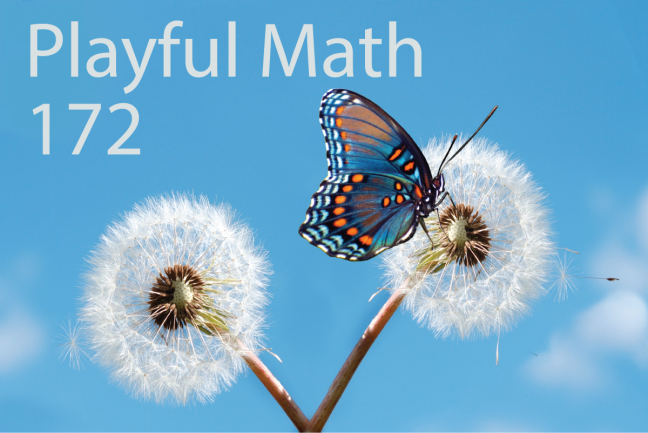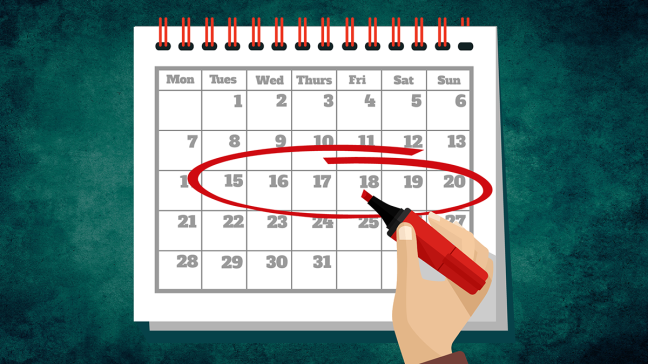Welcome to the 172nd edition of the Playful Math Blog Carnival, a buffet of delectable tidbits of mathy fun. It’s like a free online magazine devoted to learning, teaching, and playing around with math from preschool to high school.
The carnival went on hiatus for a couple of months due to unexpected life issues facing our volunteer hosts. But we’re back now, and ready to celebrate!
By tradition, we start the carnival with a puzzle in honor of our 172nd edition. But if you’d rather jump straight to our featured blog posts, click here for the Table of Contents.
Try This: Lazy Caterers and Clock-Binary Numbers
172 is a lazy caterer number: Imaging a caterer who brought a single large pie to serve the whole party. He needs to cut it into as many pieces as he can, using the fewest (straight) cuts he can get away with.
- If each guest gets one piece of pie, what sizes of parties (numbers of people) can the lazy caterer serve?
- Can you find a pattern in the lazy caterer sequence?
But for those of you who have followed the carnival for years, you may remember we played with the lazy caterer back in Playful Math 106. (That time, the caterer was serving pizza.) So here’s a bonus activity we’ve never done before…
The first several stages of a pattern are as follows:

- What do you notice about this pattern of shapes?
- What is the next shape in the sequence?
- Can you figure out how the shape below fits into the pattern?

This pattern sequence was named clock binary by its creator, noelements-setempty.
- What questions can you ask about this sequence?
- How are these shapes like the binary numbers?
- How are they different?
Click here for all the mathy goodness!












